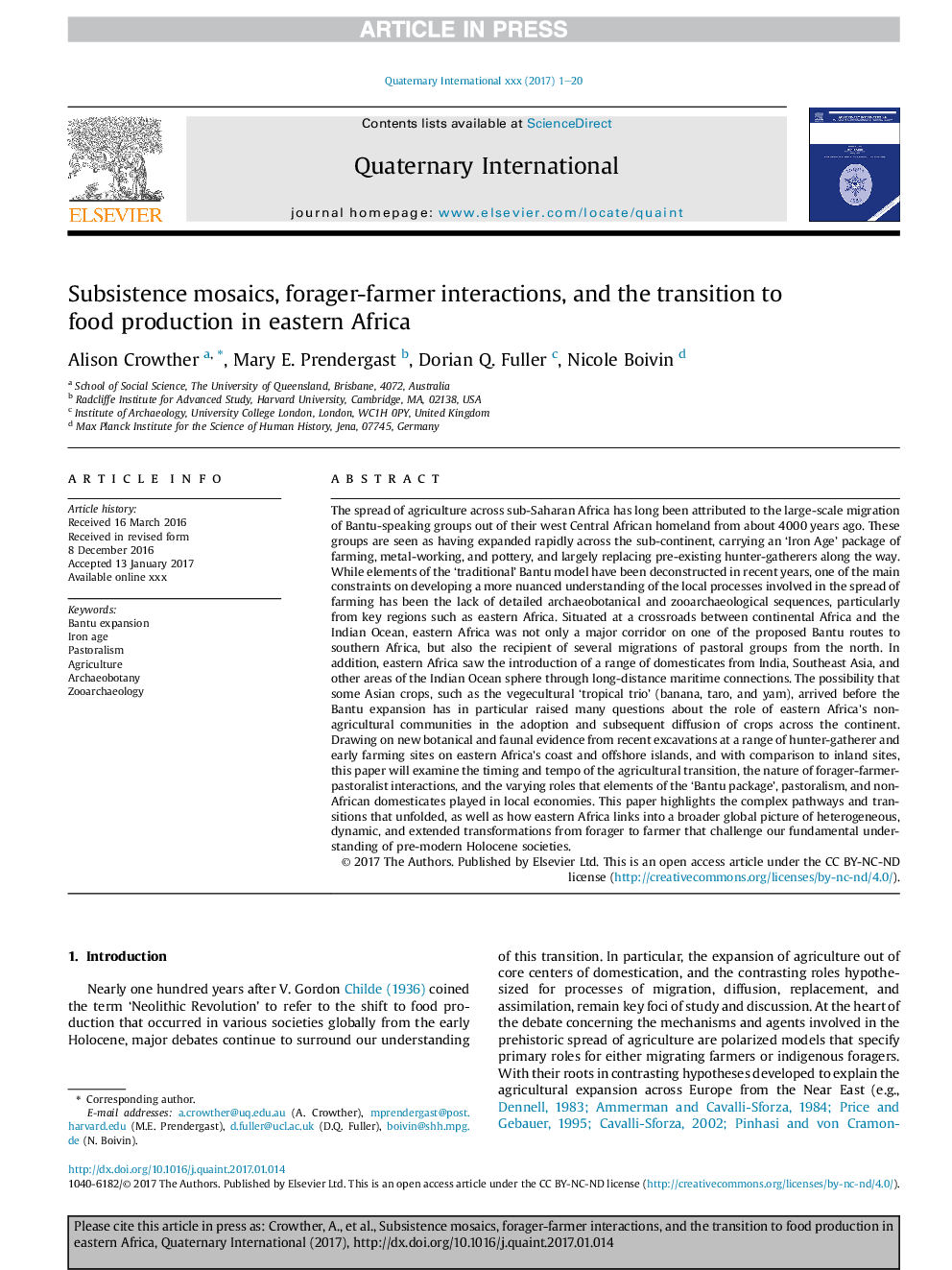| کد مقاله | کد نشریه | سال انتشار | مقاله انگلیسی | نسخه تمام متن |
|---|---|---|---|---|
| 8942535 | 1645086 | 2018 | 20 صفحه PDF | دانلود رایگان |
عنوان انگلیسی مقاله ISI
Subsistence mosaics, forager-farmer interactions, and the transition to food production in eastern Africa
ترجمه فارسی عنوان
موزاییک های اقامت، تعامل های مزرعه دار و مزرعه و انتقال به تولید مواد غذایی در شرق آفریقا
دانلود مقاله + سفارش ترجمه
دانلود مقاله ISI انگلیسی
رایگان برای ایرانیان
کلمات کلیدی
موضوعات مرتبط
مهندسی و علوم پایه
علوم زمین و سیارات
زمین شناسی
چکیده انگلیسی
The spread of agriculture across sub-Saharan Africa has long been attributed to the large-scale migration of Bantu-speaking groups out of their west Central African homeland from about 4000 years ago. These groups are seen as having expanded rapidly across the sub-continent, carrying an 'Iron Age' package of farming, metal-working, and pottery, and largely replacing pre-existing hunter-gatherers along the way. While elements of the 'traditional' Bantu model have been deconstructed in recent years, one of the main constraints on developing a more nuanced understanding of the local processes involved in the spread of farming has been the lack of detailed archaeobotanical and zooarchaeological sequences, particularly from key regions such as eastern Africa. Situated at a crossroads between continental Africa and the Indian Ocean, eastern Africa was not only a major corridor on one of the proposed Bantu routes to southern Africa, but also the recipient of several migrations of pastoral groups from the north. In addition, eastern Africa saw the introduction of a range of domesticates from India, Southeast Asia, and other areas of the Indian Ocean sphere through long-distance maritime connections. The possibility that some Asian crops, such as the vegecultural 'tropical trio' (banana, taro, and yam), arrived before the Bantu expansion has in particular raised many questions about the role of eastern Africa's non-agricultural communities in the adoption and subsequent diffusion of crops across the continent. Drawing on new botanical and faunal evidence from recent excavations at a range of hunter-gatherer and early farming sites on eastern Africa's coast and offshore islands, and with comparison to inland sites, this paper will examine the timing and tempo of the agricultural transition, the nature of forager-farmer-pastoralist interactions, and the varying roles that elements of the 'Bantu package', pastoralism, and non-African domesticates played in local economies. This paper highlights the complex pathways and transitions that unfolded, as well as how eastern Africa links into a broader global picture of heterogeneous, dynamic, and extended transformations from forager to farmer that challenge our fundamental understanding of pre-modern Holocene societies.
ناشر
Database: Elsevier - ScienceDirect (ساینس دایرکت)
Journal: Quaternary International - Volume 489, 30 September 2018, Pages 101-120
Journal: Quaternary International - Volume 489, 30 September 2018, Pages 101-120
نویسندگان
Alison Crowther, Mary E. Prendergast, Dorian Q. Fuller, Nicole Boivin,
